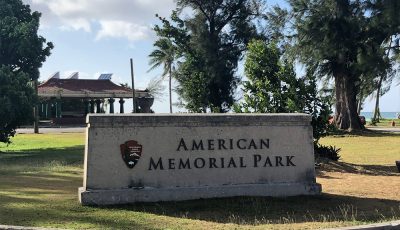EDITORIAL
Pea Eye Day
The use of “Pea eye” is not meant to be inconsequential, only to be casual. “P. I.” is a discarded title used during the American occupation of an archipelago of islands named after a Spanish sovereign who presided over the height of the Spanish Empire, Philipp II, who later married Elizabeth and became England’s King, among a few kingdoms.
Historical account is not our task at the moment, nor about the mathematical pi that resembles the acronym. It is about a group tracing their genetic descent in a group of Malayan islands, all 90 million of them at home and 11 million in diaspora in every nook and cranny of the known world, and a force on Saipan by accident of history.
Today’s celebration has to do with a declaration of independence from Spain in 1898 by Gen. Emilio Aguinaldo. This is different from the July 4 granting of independence by the United States after WWII in 1946 when a people caught in the ministrations of American and Japanese military forces survived with more pride than common sense in a semblance of democracy, turning its status since 1935 as a Commonwealth of the United States into one of the first independent former colonies after WWII.
To speak of the Philippines as if it were a homogenous group is to mimic imposed imperial homogeneity over a diverse people. There is nothing common between a native of Aparri and one in Tawi-Tawi, nor a maginoo in Surigao to the Ilocano in Currimao. They gathered under the same political umbrella of a sovereign that the Moro kris of Mindanao and the G-strings of Montañosa did not acknowledge.
Yet, the colorful batiks of Lanao and the brass gongs of Cotabato are sold in the public markets of San Fernando; the muezzin’s call is not limited to the area of Zamboanga to Isabela, even as Hiligaynon, Cebuano, Waray of Bisaya are sounds heard in the multi-glut shops of Pagadian to Claveria, echoing tongues of traders from Davao, Naga to Sanchez Mira who wag in distant tones.
The 11 million Filipinos in diaspora are all over the world, with a handful in the Northern Mariana Islands that saw a 400 percent growth from 17,000 folks in 1980 to about 66,000 in 1998. The growth came in labor pools in the economic growth by a marketing advantage of Made-in-USA labels in garments stitched by cheap imported Asian labor.
In 1995, the CNMI’s ethnic profile was a third Pinoy (34 out of a 100), Chamorro at 29, Chinese at almost 12, 8 of other Pacific Islanders, Carolinians at over 5, Koreans at 4, Caucasians at less than 4, Japanese at about 2 and the remaining for all others. Local were clearly outnumbered in the same way it is in Guam where Filipinos are a third of the populace.
Precisely because they are not a homogenous social group, Filipinos are hardly a dominant group, or as money-crazed and ever-frenzied workaholics like their hard-to-satisfy Sinosphere cousins. They send half of their earnings home and spend the rest having a good time on wholesale price. Like unscrewing the Tanduay today.
Ah, the Pinoys of Pea Eye, may their street-smart resiliency, world-wise industry, rub off on other groups this day. © 2015 Saipan Tribune



























